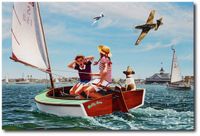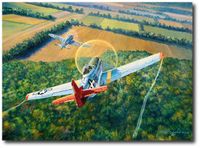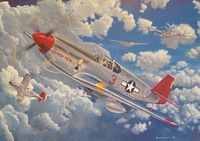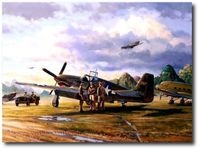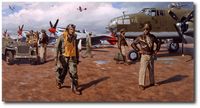P-51 Mustang
The North American P-51 Mustang was designed as the NA-73 in 1940 at Britain's request. The design showed promise and AAF purchases of Allison-powered Mustangs began in 1941 primarily for photo recon and ground support use due to its limited high-altitude performance. But in 1942, tests of P-51s using the British Rolls-Royce "Merlin" engine revealed much improved speed and service ceiling, and in Dec. 1943, Merlin-powered P-51Bs first entered combat over Europe. Providing high-altitude escort to B-17s and B-24s, they scored heavily over German interceptors and by war's end, P-51s had destroyed 4,950 enemy aircraft in the air, more than any other fighter in Europe. Mustangs served in nearly every combat zone, including the Pacific where they escorted B-29s to Japan from Iwo Jima. During the Korean War, P-51Ds were used primarily for close support of ground forces until withdrawn from combat in 1953.
























